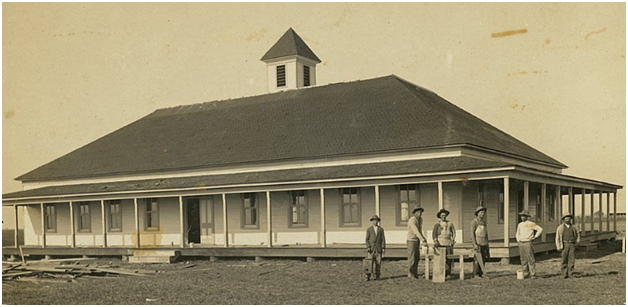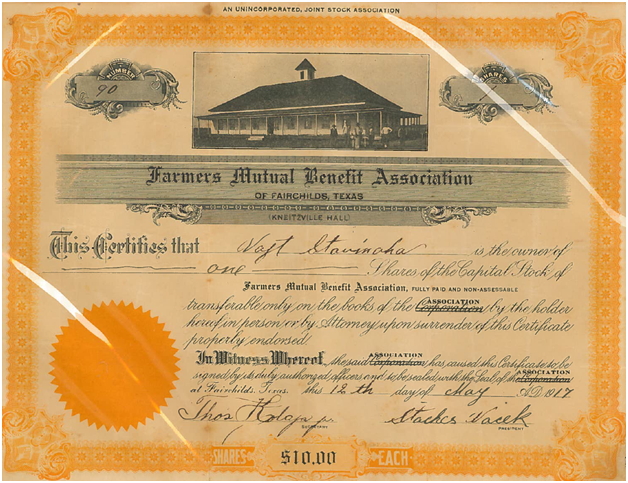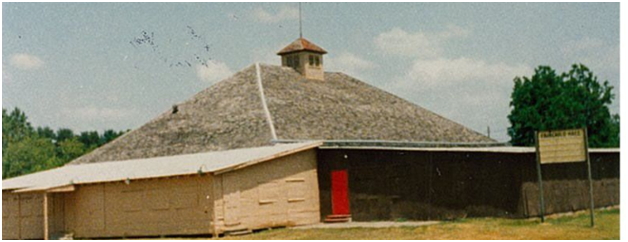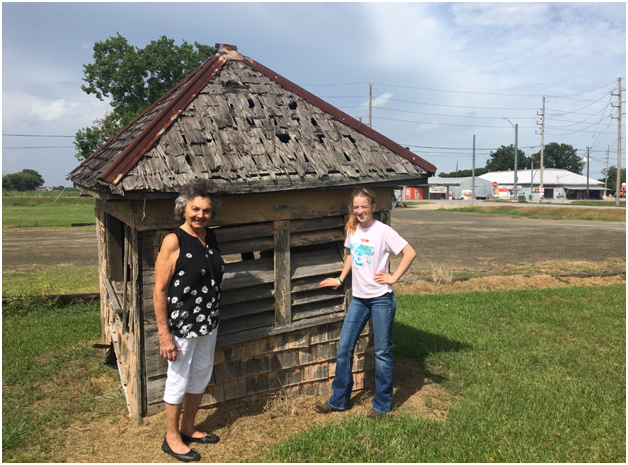
Fairchilds, Texas
Fairchild Hall was completed in 1912. It was famous for thecupola on the roof which balanced a long pole with a light that could be seen from miles away. Longtime resident, Loretta Myska, remembers how tired she and her family would be from picking cotton, but when they saw that light switch on indicating there would be a dance, they would magically receive a second wind and go out to dance. She fondly recalled the day she met her husband, Robert, there. Robert passed away in 2006 and Loretta still lives in Fairchilds as she has her entire life.
Loretta’s grandfather, Vogt Stavinoha, settled in Fairchlids after being unhappy with the soils in Weimer. Fairchilds had nearly been abandoned after the 1900 hurricane that wrecked Galveston caused massive damage also in Fairchilds. However, new residents, many of them new immigrants, were attracted by the farm land, and developed plans for a central meeting place. Louis Kneitz donated the land, the residents organized a “Farmers Mutual Benefit Association” (abbreviated RVOS in Czech) and sold stock for $10/share to pay for construction. Hard to imagine that tenant farmers and recent immigrants, with very little to their names, could muster the resources to build one of the region's most iconic dance halls, but it happened. The Fairchild hall stood at the same location until 1999 when it was demolished. Today all that remains are some ancillary buildings and the famous cupola. The cupola, which can still be seen off Needville-Fairchild road, is not in good condition.

Fairchild Hall in 1912 (as construction was being completed)

Loretta Myska’s grandfather’s stock in Fairchild Hall (dated 1917).

Fairchild Hall prior to demolition

Loretta Myska and Needville Preservation member Jessie Roussel stand next to the final remains of Fairchild Hall
FAIRCHILDS, TEXAS-POSTMASTER
Concord Cemetery
Located 7 mi. S of Rosenberg on SH 36; 3.5 mi. SE on FM 361; NE on Fairchilds Road. [1962]
At the end of the 19th century, a community of Mennonites settled on the 33 lots of the Barnabas Wickson league. It is believed that the first persons interred on this site were Heinrich Reimer (d. 1898) and Maria Klassen (d. 1899). Siblings Maria and Isaac Neufeldt died of typhoid fever in 1900 and are also thought to be interred here. In 1905 George W. Howell, a non-Mennonite, deeded one acre of his land adjoining the Concord school for a public cemetery. Jacob Suderman, a Mennonite cemetery trustee, died in 1906 and probably is buried here. After the devastating 1900 storm, the Mennonites began moving away. Settlers of German, Czech and Polish descent began to occupy the area and use the burial ground. The earliest marked grave is that of Anesha Dobes, who was buried in 1913. During an archeological investigation in 1995, ten unmarked graves were discovered.